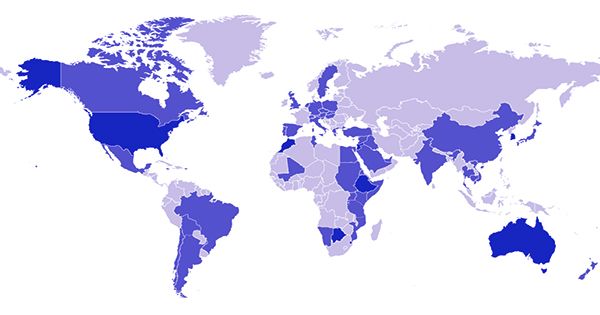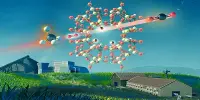The Americans are hiding the West in a historic megadrought. One of the main culprits is climate change, and the emerging crisis is now seen as “the same path as the worst prehistoric drought” as global temperatures begin to rise further. A new study, published in the journal Science, has used data on 1,200-year-old tree rings, soil moisture records and dozens of climate models to describe long-stemmed dry gemstones in recent times in western America and northern Mexico.
They found that prolonged droughts have been affecting the southwestern United States and northern Mexico since at least 2000. The spell of moisture has already taken such a deadly shape that it has already surpassed three of the infamous dried megadroughts of the medieval period. The researchers were uncertain about the extent of the fourth medieval megadrought, which spanned from 1575 CE to 1603 CE, although they note the current drought is affecting wider areas more consistently than any megadrought since 800 CE.
Lead author Park Williams, a bioclimatologist at Columbia University’s Lamont-Doherty Earth Observatory, said in a statement, “We now have adequate observations of past droughts, current droughts and tree-ring records that we say we are on the same path as the worst prehistoric droughts.” It is clear that the drought has been driven by “natural” phenomena such as El Niño/La Niña weather currents in the Pacific Ocean, although climate change is pushing this trend into more dangerous areas. Researchers estimate that if climate change were removed from this equation, the current drought, which was only considered the eleventh worst, is not yet one of the worst.
Co-author Benjamin Cook, who is affiliated with Lamont and the Goddard Institute for Space Studies, “It doesn’t matter if it’s the worst drought ever. What matters is that it has gotten worse because of climate change.” Some researchers have noted that the definition of space study is not strictly accurate, as it only lasts 19 years, typically 20 years is not required to meet this definition. As such, it may be too early to say whether the region is at the beginning of a true megadrought. Yet, regardless of the definition, very few people will argue about the worrying situation on the horizon.
Dr Angeline Pendergrass, a scientist with the US National Center for Atmospheric Research, who was not directly involved with the study, commented to BBC News, “Whether West America has reached the wilderness by a certain label, what has become clear in this century is that West America’s water is an essential resource, and it is a risk, because the region can be long-lasting with little rainfall.” “And it looks like climate change doesn’t make it any better – really, it probably makes it worse.”















